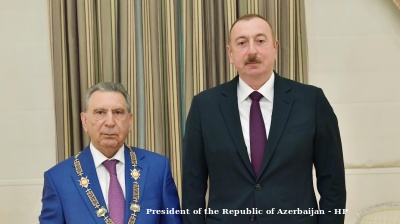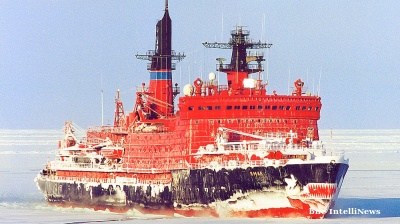“When a boy is born on the steppes, he is a wrestler.” Old Mongolian saying. Many believe that this centuries-old wrestling tradition can be translated to Mongolian domination of professional mixed martial arts (MMA).
In a wrestling gym in Ulaanbaatar, a 15-year-old boy, who weighs about 65 kilograms takes his turn going against the assistant coach, an adult, a 30-year veteran of the sport who is exactly double the boy’s weight. Far from taking it easy on the boy, the coach throws him, tosses him and man-handles him, slamming him down on the mat, again and again. But each time, the boy gets up and charges at the coach, with a look of pure fire in his eyes. The bout goes on, non-stop, for more than 20 minutes. This scene which repeats itself, day after day, encapsulates the spirit, determination and lack of fear in the Mongolian wrestlers.
It also illustrates the culture. From a young age, boys are treated as men and are expected to endure hardship and pain without showing signs of weakness.
Mongolian wrestlers are renowned for their spirit, determination and lack of fear.
Across town, in a commercial fitness gym which has a wrestling room, huge Mongolian adults, the smallest of whom weighs about 100 kilograms, while the others are about 120, practice belt wrestling. The traditional Mongolian wrestling, bökh, has no time limits and no weight limits, and bouts end when one of the opponents hits the ground. Bökh requires briefs and an open-chested shirt, which can be gripped for throwing. Rather than have to carry their wrestling gear around with them everywhere they go, Mongolian men often just throw on a judo or karate belt, over their exercise clothes, and practice belt wrestling with the same rules as bökh. After a few rounds, they normally go to the other room and lift weights.
Mongolian fighters at Shiren Beelii MMA club.
The harsh environment creates hard people
With temperatures ranging from -40 in winter to plus 35 in summer, Mongolia has an extreme and inhospitable climate where only the hardiest survive. Forty percent of the population still live as nomadic herders. Growing up on the steppes, boys begin riding horses at age three and wrestling at age five. Working as herders means constantly having to wrestle the animals.
Mendbagana Tovuujav (Bagna for short), a Mongolian who wrestled for George Mason University, becoming an All-American, joked: “It’s like progressive weight training. When you’re little, they make you wrestle sheep. When you get older you wrestle horses, and finally, you wrestle camels.”
The nomads live in gers (yurts) which do not have running water; consequently, according to Bagna, carrying the family’s water ration is one of the chores that contributes to the strength of the young countryside boys. “I had to go get water for the family every day 10 litres on each side, from age six or seven. It was like 200 metres for me, but every day, and even in winter,” said Bagna.
Riding a horse all day and walking up and down the hills, chasing after sheep, gives the Mongolians superhuman thighs. People often see pictures of the Mongolian wrestlers and ask about their thigh routine. “How can I get thighs like that?” The answer is simple. “You just need to be born on the steppes, ride horses and wrestle from pre-school age and eat a diet consisting of only milk and meat.”
In China the national level wrestlers generally grow up in a sports school, specialising in a single wrestling style, whereas in Mongolia the wrestlers compete in everything.
Dandar, head coach at the only specialized wrestling high school, in Ulaanbaatar, told about how during his long wrestling career, he had competed in traditional wrestling, freestyle, and sambo. And this is a huge difference between wrestlers in Mongolia and other parts of Asia. In China, for example, the national level wrestlers generally grow up in a sports school, specialising in a single wrestling style, whereas in Mongolia the wrestlers compete in everything. Several of Dandar’s students have been selected to go to Japan to compete in sumo, while those who remain in Mongolia compete, not only in traditional wrestling, freestyle, and sambo but also judo and Brazilian jujitsu. This is one of the factors that speaks in favour of Mongolians being able to transition to international MMA, because most MMA fighters train and compete in almost any code of fighting they have the opportunity to.
When Mongolians predict a Mongolian wave in MMA, they generally cite two examples, sumo and judo. Zorigt Zorky Ulaankhuu, who has a number of Mongolian MMA fighters fighting in large promotions around the world, said: “It’s up to the UFC. If they let us fight, we will dominate, just like sumo.”
In 1992, the first recruitment competition was held for Mongolian boys to wrestle for a chance to go to Japan and become sumo trainees. Of more than 100 boys, five were chosen. Since that time, Mongolians have completely dominated Japan’s most prestigious sport. This small country has produced four Yokozuna, grand champions: Asashoryu Akinori, Hakuho Sho, Harumafuji Kohei, and Kakuryu Rikisaburo. In fact, in the past 20 years, only one Japanese was promoted to the rank of Yokozuna, but he had to retire shortly after, due to injuries.
Mongolian judo, with the patronage of the country's head of state who is a former wrestling, sambo and judo champion, has steadily improved in the past decade.
Similarly, in recent years, Mongolians have done incredibly well in judo. Mongolia’s president Khaltmaa Battulga, nicknamed “the judo president”, is a former wrestling champion, sambo champion, and judo champion. While serving as president of the nation, he also serves as president of the Mongolian Judo Association, to which he has given a great deal of support, both moral and financial. Consequently, Mongolian judo has steadily improved since 2009, when Tsagaanbaatar Khashbaatar won the judo world title. Next, Mongolia made it to the finals of the Olympics in 2012. Urantsetseg Munkhbat won a world title in 2013 and Ganbat Boldbaatar won the world title in 2014. In the 2016 Olympics, Sumiya Dorjsuren won the silver. And in 2017, Dorjsuren won six medals, including the world title.
Money matters
Turbat, the head coach of Shiren Beelii MMA club said that finances are one of the biggest obstacles standing in the way of the Mongolians taking their natural talents in wrestling and transitioning to becoming professional MMA champions. Healthy food, nutrition, and equipment are all in short supply, and even taking a taxi across town to the training hall is out of reach for some of the fighters. Foreign coaches are unaffordable, and there are only a few Mongolians at this point who have significant overseas fight and training experience to share with their countrymen. The MMA clubs are privately funded and have limited opening and training hours. Additionally, the athletes have to maintain fulltime jobs to survive, preventing them from training more than once a day. When they go to fight overseas, private contracts have to be arranged for the cost of the visas, plane tickets, hotel and other expenses.
Finances are one of the biggest obstacles in the way of the Mongolians taking their natural talents in wrestling and becoming professional MMA champions.
A Mongol MMA invasion?
The Mongolians are very much aware of UFC champion Khabib Nurmagomedov and the Dagestani invasion which he led. Just a few years ago, most people in the West had never heard of Dagestan, but now, there are about 20 Dagestanis in the UFC. Dagestan is a Central Asian republic, part of the Russian Federation, very similar to Mongolia in terms of culture and climate. Both Dagestan and Mongolia have a population of around three million people and both have wrestling as their primary sport. People from both countries are known to be physically tough and have a fighting spirit. One significant difference between Dagestani MMA fighters and Mongolians, however, is that the Dagestani fighters can largely trace their lineage to Abdulmanap Nurmagomedov, the father of Khabib. Not only was Abdulmanap Nurmagomedov an exceptional coach with an incredibly long history of competition and training in sambo, judo, wrestling, san da and other fight sports, but he also ran a live-in fight academy for teenagers. In that regard, the training in Dagestan is similar to the sumo training in Japan. Fighters live under strict discipline, eating, training, sleeping and competing on a schedule. Now that the Dagestanis have done so well in MMA, there is also government support for such training facilities.
Many Mongolians are convinced there will be a Mongolian wave in MMA.
Features

Andaman gas find signals fresh momentum in India’s deepwater exploration
India’s latest gas discovery in the under-explored Andaman-Nicobar Basin could become a turning point for the country’s domestic upstream production and energy security

The fall of Azerbaijan's Grey Cardinal
Ramiz Mehdiyev served as Azerbaijan's Presidential Administration head for 24 consecutive years, making him arguably the most powerful unelected official in post-Soviet Azerbaijan until his dramatic fall from grace.

Ambition, access and acceleration – Uzbekistan’s Startup Garage opens free academy for entrepreneurship
Aim is to train 50,000 young founders by 2030.

Ukraine’s growing energy crisis promises a cold and dark winter
Since the summer, Kyiv has changed tactics. Given the almost complete failure of Western oil sanctions to curb Russian oil exports, it has been targeting Russian oil refineries. The Kremlin has struck back, targeting Ukraine's power system.










